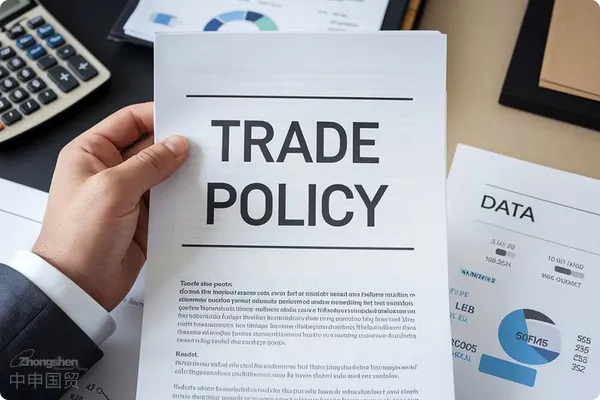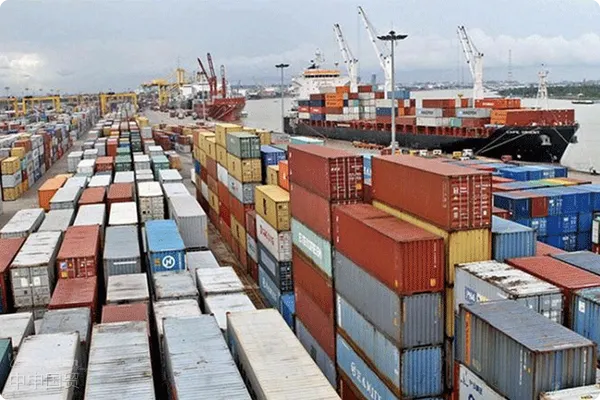- Shanghai Zhongshen International Trade Co., Ltd. - Two decades of trade agency expertise.
- Service Hotline: 139 1787 2118
On October 30, 2024, the Bureau of Industry and Security (BIS) of the US Department of Commerce announced an update to the Entity List, marking 49 entities under 52 existing entries as Russian end - use military users and adding footnote 3. This means that these entities are regarded as procurement agencies for Russian end - use military purposes and are thus subject to more stringent export, re - export, and transfer controls. A total of 41 Chinese enterprises are involved in these new control measures, along with several companies from Estonia, India, Turkey, the UAE, the UK, and Finland. This article will helpforeign tradeenterprises understand these changes and discuss countermeasures.

I. The US Entity List and Its Impact
The US Entity List is a list released by BIS of the US Department of Commerce, containing companies, organizations, and individuals considered to be involved in activities that violate US national security or foreign policy interests. Once listed on this list, these entities are subject to strict restrictions when obtaining US items (including hardware, software, technology), usually requiring an export license, which is often difficult to obtain.
In this update, 49 entities were marked as Russian end - use military users, including 41 from China, 4 from India, 2 from Turkey, and 1 each from Estonia, the UAE, the UK, and Finland. The products of these enterprises include electronic components, logistics services, testing equipment, etc., which are considered to potentially be transferred to Russia for military use through intermediate procurement.
II. The Superimposed Effect of the FDP Rule and the Entity List
Footnote 3 was added in this marking, meaning that in addition to the control measures applicable to the Entity List, the Foreign Direct Product Rule (FDP Rule) is also superimposed. The purpose of the FDP Rule is to control the flow of products manufactured abroad but containing a certain proportion of US technology or software to controlled entities. Thus, items not originally manufactured in the US may also be subject to US export controls due to containing US technology.
For enterprises listed on the Entity List with footnote 3, restricted items such as US - branded electronic components cannot flow to Russia through these foreign procurement networks. This makes foreign - trade enterprises need to be格外 cautious when trading with these entities to avoid violating export control regulations.
III. New Entries in the Entity List
In addition to marking 49 entities in the existing Entity List, BIS of the US Department of Commerce also added 46 entities to the Entity List, including 11 from China, 5 from India, 2 from Malaysia, 13 from Russia, 1 from Singapore, and 14 from Turkey. These new entries mainly involve micro - electronics products and other items related to Russias high - priority procurement, aiming to combat Russias efforts to support its war in Ukraine through procurement from third - party countries.
IV. Countermeasures for Foreign - trade Enterprises
Facing increasingly strict export controls and new entries in the Entity List, foreign - trade enterprises should take the following measures to ensure compliance and effectively respond to potential trade risks:
- Strengthen compliance review: Enterprises need to establish and improve internal compliance mechanisms to ensure that trading partners are not on the Entity List, especially for transactions involving Russian end - users or sensitive items.
- Track regulatory updates in real - time: The export control policies of countries and regions such as the United States and the European Union are frequently updated. Foreign trade enterprises need to be sensitive to policy dynamics, obtain the latest information in a timely manner, and adjust their business operations.
- Increase supply chain transparency: For partners and suppliers in the supply chain, enterprises need to strengthen due diligence to ensure that they are not cooperating with enterprises on the Entity List, thus avoiding indirectly violating control regulations.
- Seek professional advice: Export control regulations are complex and changeable. Enterprises can seek the help of professional legal advisors or compliance experts to ensure proper operations in the complex international trade environment and reduce potential legal risks.
- Maintain transparent communication with customers: For customers compliance requirements and transaction risks, transparent communication should be maintained, especially for customers in high - risk markets and those dealing with high - risk items, to ensure that the other party fully understands the current policies and cooperates with the enterprises compliance work.
V. Special Reminders for Chinese Enterprises
In this update, Chinese enterprises have become one of the main targets of the newly added entities. The enterprises involved include electronic component manufacturers, logistics service providers, and testing equipment suppliers. This means that Chinese enterprises face more stringent compliance challenges in trade with Russia.
For Chinese enterprises, the following points are particularly important:
- Identify high - risk transactions: For transactions in the Russian market, especially exports involving sensitive items (such as micro - electronic products), special care should be taken and they should be avoided as much as possible.
- Obtain export licenses in a timely manner: If the trading object or item may involve US - controlled technology, an export license should be applied for in advance to ensure compliance with relevant regulatory requirements.
- Develop alternative plans: Consider looking for alternative markets or alternative products to reduce dependence on high - risk markets and thus reduce compliance risks.
Summary
List of Relevant Chinese Enterprises
The following is the list of Chinese enterprises added to the Entity List by the US Department of Commerce with footnote 3:
- Ace Electronics (HK) Co., Limited
- Alliance Electro Tech Co.
- Alpha Trading Investments Limited
- Asialink Shanghai Int’l Logistics Co., Ltd.
- Benico Limited, Check IC Solution Limited
- Chengdu Jingxin Technology Co., Ltd.
- E-Chips Solution Co., Ltd.
- Farteco Limited
- Glite Electronic Technology Co.
- Global Broker Solutions Limited
- Grants Promotion Service Limited
- Guangdong Munpower Electronic Commerce Co., Ltd.
- Huayuanshitong Technology Co., Ltd.
- IMAXChip
- Insight Electronics
- Kingford PCB Electronics Co., Ltd.
- Kobi International Company
- Most Technology Limited
- New Wally Target International Trade Co.
- Nuopuxun Electronic Technology Co.
- Onstar Electronics Co., Ltd.
- Robotronix Semiconductors Limited
- Rui En Koo Technology Co., Ltd
- Shaanxi Yingsaeir Electronic Technology Co., Ltd.
- Shanghai IP3 Information Technology Co., Ltd.
- Shenzhen One World International Logistics Co.
- Shvabe Opto-Electronics Co., LTD.
- Suntop Semiconductor Co., LTD.
- Tordan Industry Limited
- TYT Electronics Co., Ltd.
- UCreate Electronics Group
- Wargos Industry Limited
- Win Key Limited
- Xin Quan Electronics Hong Kong Co.
- ZeYuan Technology Limited
- Zhejiang Foso Electronics Technology Co., Ltd.
- Zixis Limited
- Zone Chips Electronics Hong Kong Co., Limited
- C & I Semiconductor Co., Ltd
- China Shengshi International Trade Ltd
- PT Technology Asia Limited
The update of the Entity List by the US Department of Commerce and the addition of new control items aim to prevent Russia from obtaining key US technologies and products through third - party channels. For global foreign trade enterprises, especially Chinese enterprises in trade with Russia, this means an increase in compliance risks. By strengthening compliance review, tracking regulatory dynamics in real - time, increasing supply chain transparency, and seeking professional advice, enterprises can continue to maintain stable business operations in the new trade environment. I hope this article can help you better understand these changes and provide guidance for your compliance operations.
Related Recommendations
Core Business
Contact Us
Email: service@sh-zhongshen.com
Related Recommendations
Contact via WeChat

? 2025. All Rights Reserved. 滬ICP備2023007705號-2  PSB Record: Shanghai No.31011502009912
PSB Record: Shanghai No.31011502009912








